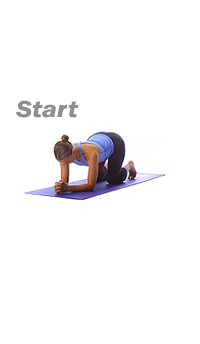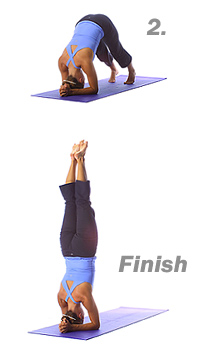Yoga: Headstand
Yoga


Exercise Description:
Yoga: Headstand
Classification:
Yoga
Instruction:
Caution: do not practice this asana if you have cervical spondylosis, blocked arteries, suffer from osteoarthritis of the neck, shoulders, back ache, or premenstrual stress also do not perform this if you are overweight or if you have been practicing yoga for less than two years. Begin by coming onto the elbows and knees about six inches away from a wall. Now place the hands to the outside of the tricep muscles to establish the beginning arm position. Release the elbows and interlock the fingers creating a v-stance with the forearms. Rest the crown of the head on the floor. Tuck the toes under inhale and lift the hips up towards the sky and straighten the legs. Be sure that the neck is in proper alignment. This posture is an advanced yoga inversion. It is recommended to get help from a yoga practitioner to perform this in a correct and safe manner. Once this initial position has been established, place one foot in front on the other preferably the stronger leg forward. Most of the weight should rest on the elbows not on the crown of the head. Contract the abdominals and the pelvic floor muscles and slowly, one leg at a time, float the feet up resting the legs on the wall. The weight should still not rest on the crown of the head, rather- rest on the elbows. Keep the legs together and the toes spread. Only if the neck is very strong and you have been practicing for many years can you then rest your head on the floor. As you begin to build the headstand posture, from the starting position engage from the lower abdominals and slowly float both legs up together until you are in the inverted headstand position. Eventually as you establish this posture, you can move away from the wall and attempt it in a free-stand position. Hold this posture for 5 to 10 deep breaths.
Side Note:
Nourishes the brain, re-circulates the blood. Strengthens the shoulders and neck. Helps to treat stress-related headaches, migraines and treat ear and eye ailments. Regulates blood pressure. Relieves indigestion and nausea. Calms the central nervous system and quiets the mind. Alleviates depression. Boosts confidence and self-esteem.


 Active Sitting
Active Sitting